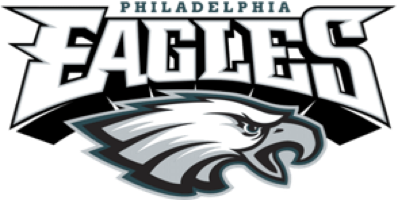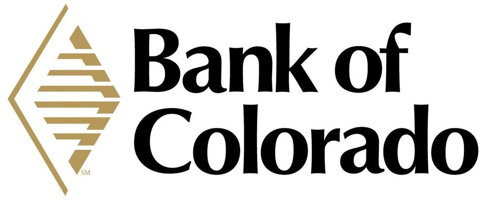At the core of a digital signage system is the media player. It’s the computer that broadcasts your digital signage campaign to your displays. As a general rule, pair one media player with each display or sign. New options appear all the time, but here’s an intro to the topic and a brief guide to the best choices available now.
Get started with digital signage software with Rise Vision!
A digital signage media player is a compact computer specifically designed to display digital signage media. The hardware used in digital signage media players is selected to let them easily broadcast high-definition images, videos, and animations.
In the past, desktop computers were used as digital signage media players. However, their bulk made them unsuitable for certain applications. Tidying them away from the audience’s sight was difficult, and they are too heavy to be installed in overhead locations. Using a desktop for digital signage also wastes a lot of processing power and memory. Or you reuse older PCs, which come with power, durability, and safety concerns. As digital signage became more common, these issues became pressing, and smaller, more lightweight digital signage media players were developed.
By removing non-essential components, ports, and bulky cases, digital signage media player manufacturers were able to provide a compact yet powerful solution for any organization that needed to implement a system in any type of setting.
Choosing the right media player is the most critical step in the process of building your system. To help you make the right choice for your organization, we've listed some of the most popular and effective operating systems and models, together with their benefits.
Simplify your digital signage with the Rise Vision Media Player Hardware as a Service, a high-performance digital signage player built for education and commercial use. It gives you predictable low upfront hardware costs and makes it simple to purchase your Rise Vision software and hardware from one vendor. The media player is completely managed and supported by us, so you can focus on the message you're communicating, not the technology to deliver it. If you ever run into a problem, we’ll replace it. And we’ll upgrade it regularly.
Windows-based digital signage players have the longest track record in the space. They can handle any digital signage application, they’re familiar to IT technicians, and they come with robust support from Microsoft. Windows digital signage players are an industry go-to for a variety of installations that includes shopping mall kiosks and multiple-display video walls. At Rise Vision, we typically recommend them for multi-screen applications or for organizations that already run their internal IT systems on Windows.
Chrome OS is a relative newcomer, and digital signage media players based on it have been available only for a few years. Recommended to a growing user base by affordable prices and compact design, Chrome OS players like Chromebits and Chromeboxes can be a great choice for small signage implementations — and can increasingly hold their own against established industry favorites. They’re effective, versatile, and secure. Note that you’ll need a Chrome device management license to use a Chrome device for digital signage.
Linux is the basis for the Chrome, Android, and Raspberry Pi Raspbian operating systems. It’s open-source, which reduces costs without compromising security, and many digital signage software packages are Linux-compatible. Linux is an adaptable OS, and choosing it for your digital signage means you’re not tied down to one company’s operating system or domain.
The Raspberry Pi is a deliberately minimal computer, conceived as a hobbyist’s testbed. However, its adaptability, reliability and small size make it an ideal media player paired with the Raspbian Linux operating system. They’re a popular choice on cost grounds as well as finding favor with technology-oriented organizations.
Android-powered media players are popular for their low cost and reliability, as well as for the familiarity of the Android OS. There’s a wide variety of Android-powered media players available, priced from $30 up to several hundred dollars. We always recommend choosing a reputable brand to avoid security and reliability issues.
The Amazon Signage Stick is designed to make digital signage easier and more accessible to your business. The Signage Stick comes pre-loaded with Rise Vision, so you can enjoy the features of our easy-to-use CMS for your signage display network.
Apple TV is a reliable and low-cost digital signage media player. Apple TVs are great digital signage media players for use in classrooms and meeting rooms. Organizations that primarily use Apple products for technology will find that it’s easy to maintain Apple TV as a digital signage media player.
Set up Rise Vision digital signage and screen sharing software with ease using BrightSign's reliable hardware. Compatible with BrightSign Series 5 or higher devices. We support three setup methods: BSN Cloud, the BrightSign web console, or a physical SD card — and the installation takes just minutes!
Many organizations are getting more out of their investment in wireless presentation systems and meeting room technology by using the devices as digital signage players when they are not in use. This helps you make the most out of idle displays and gets your message in front of more people more frequently.
Some common wireless presentation systems and meeting room technologies Rise Vision can run on are Airtame, Zoom Rooms, ScreenBeam, Mersive, and Vivi.
With an emphasis on reliability and cross-platform support, Airtame’s small, yet powerful dongle media players are highly adaptable and offer enterprise-level security. They’re compatible with a wide variety of operating systems, and switching from streaming to signage is particularly quick and easy, making them a good choice for multi-use screens. Rise Vision integrates with the Airtame platform to display important messaging, make full use of Rise Vision’s ever-growing template library, and unify digital signage across the organization. Learn how to use Rise Vision with Airtame here.
Designed as a digital meeting space that augments Zoom’s core videoconference offering, Zoom Rooms enable HD video collaboration in real time between in-person and remote participants. The product comes with features designed to improve the experience for remote attendees, but can also be used for digital signage. Learn how to use Rise Vision with Zoom Rooms here.
Mersive’s Solstice is an excellent multi-user tool that lets groups of people cast to a single screen, or one user cast to several screens. It’s widely used in the business world for meetings and presentations, and can also be used as a digital signage display system. Learn how to easily use Rise Vision with a Mersive Solstice here.
Screenbeam allows mirroring and casting without wifi or mobile data usage, via a range of hardware devices. It’s appless, with functionality built directly into devices rather than software, but it does require another device to manage content. Popular in education, Screenbeam works well with Rise Vision. Learn how to use Rise Vision with ScreenBeam here.
Many organizations are getting more out of their investment in wireless presentation systems and meeting room technology by using the devices as digital signage players when they are not in use. This helps you make the most out of idle displays and gets your message in front of more people more frequently.
Some common wireless presentation systems and meeting room technologies Rise Vision can run on are Airtame, Zoom Rooms, ScreenBeam, Mersive, and Vivi.
With an emphasis on reliability and cross-platform support, Airtame’s small, yet powerful dongle media players are highly adaptable and offer enterprise-level security. They’re compatible with a wide variety of operating systems, and switching from streaming to signage is particularly quick and easy, making them a good choice for multi-use screens. Rise Vision integrates with the Airtame platform to display important messaging, make full use of Rise Vision’s ever-growing template library, and unify digital signage across the organization. Learn how to use Rise Vision with Airtame here.
Designed as a digital meeting space that augments Zoom’s core videoconference offering, Zoom Rooms enable HD video collaboration in real time between in-person and remote participants. The product comes with features designed to improve the experience for remote attendees, but can also be used for digital signage. Learn how to use Rise Vision with Zoom Rooms here.
Mersive’s Solstice is an excellent multi-user tool that lets groups of people cast to a single screen, or one user cast to several screens. It’s widely used in the business world for meetings and presentations, and can also be used as a digital signage display system. Learn how to easily use Rise Vision with a Mersive Solstice here.
Screenbeam allows mirroring and casting without wifi or mobile data usage, via a range of hardware devices. It’s appless, with functionality built directly into devices rather than software, but it does require another device to manage content. Popular in education, Screenbeam works well with Rise Vision. Learn how to use Rise Vision with ScreenBeam here.
"To drive the point home, we have had several vendors, some who charge $1,000 monthly for their cloud software, come through and look at the solution we have put together. They are universally blown away by what Rise Vision does and what we've been able to accomplish with it in such a short time."

Digital signage players typically last about three to five years, depending on how often they’re used and the quality of their components and manufacturing. Organizations usually purchase new digital signage media players when they wish to upgrade to higher-resolution or larger displays, rather than when player devices expire.
Digital signage media players can cost anything from free to $1,500 or more. While it’s possible to assemble a working system by repurposing devices you already have, most organizations find their needs quickly outgrow such systems. In the long run, newer and more capable players are less expensive and longer-lasting as well as offering better security and performance.
Depending on the application and the size of the media player, media players can be placed in the following locations:
|
|
In each of the cases listed above, the primary goal is usually to hide the media player from view. Not only is it generally more aesthetically desirable, but it also prevents people from hacking digital signage campaigns and stealing media players.
A digital signage solution connects your displays through an IP network, allowing you to create dynamic layouts, control schedules remotely, and deliver engaging content to Smart TVs or other connected screens using an HDMI cable or Ethernet connection.
Look for a reliable solution with powerful features such as remote control, Wi-Fi, tailored customization options, and performance that can enhance communication, boost engagement, content management, and ensure seamless operation across your network.
Most setups use one player per screen, but advanced configurations can connect through HDMI or Ethernet to manage multiple TVs or displays simultaneously, depending on the player app’s compatibility and interactivity options.
Remote management lets you control and schedule updates from anywhere, ensuring that your messages stay fresh, engaging, and consistent across every display without manually plugging into each device.
A player app can showcase sharp visuals, videos, health tips, sales promotions, or educational content tailored to your audience, helping you create dynamic campaigns that connect with viewers in restaurants, schools, or offices.
Use quality HDMI cables, maintain a stable IP network, and choose a digital signage solution with optimized security controls to enhance reliability and performance, regardless of whether you use one screen or multiple, Smart TVs, and plugged-in devices.
Digital signage helps educational institutions share announcements, schedules, and health tips with students in real time, using dynamic animations and TVs to keep the audience informed and engaged.
Restaurants and brands can use digital signs to showcase daily specials, promote sales, and display engaging visuals that attract customers and strengthen their market presence.
Look for hardware with efficient power management, built-in WiFi, and advanced monitor control features to ensure smooth operation, optimized performance, and seamless communication with your audience.
To get started with digital signage software, you’ll first need to pick a Template from our website or from this page and then sign up for a free Rise Vision trial account.
Activate displays in your hallways, cafeteria, common areas, and more.
Remember to continue communicating better by subscribing to our free weekly Template recommendations and be sure to attend one of our free weekly training sessions. Also, we’re standing by if there’s any problem, feel free to contact us anytime.





“We've tried different solutions for digital signage but this one's the best so far. We can plan ahead and reuse our programming. It's easy to use. It's cloud based. It's customizable. It's fast and [has] extra features to monitor devices.”

Digital signage doesn’t have to be difficult.
We make it easy or your money back. 30 days risk-free.